6 million tons of municipal solid waste are produced worldwide daily, with the majority ending up in landfills and dumps, contaminating the environment
2 billion tons
of carbon dioxide equivalent are emitted from landfills annually
of all greenhouse gas emissions globally
5%
30 million m³
of garbage is delivered to landfills worldwide daily
could be filled from the bottom to the top in just
Burj Khalifa

2 hours



Traditional recycling technologies have limited capabilities; only 10-15% of waste could be recycled efficiently

20-50%
20-30%
15-20%
10-15%
10-15%
1-10%
0-5%

Several advanced recycling technologies are emerging, one of them is gasification
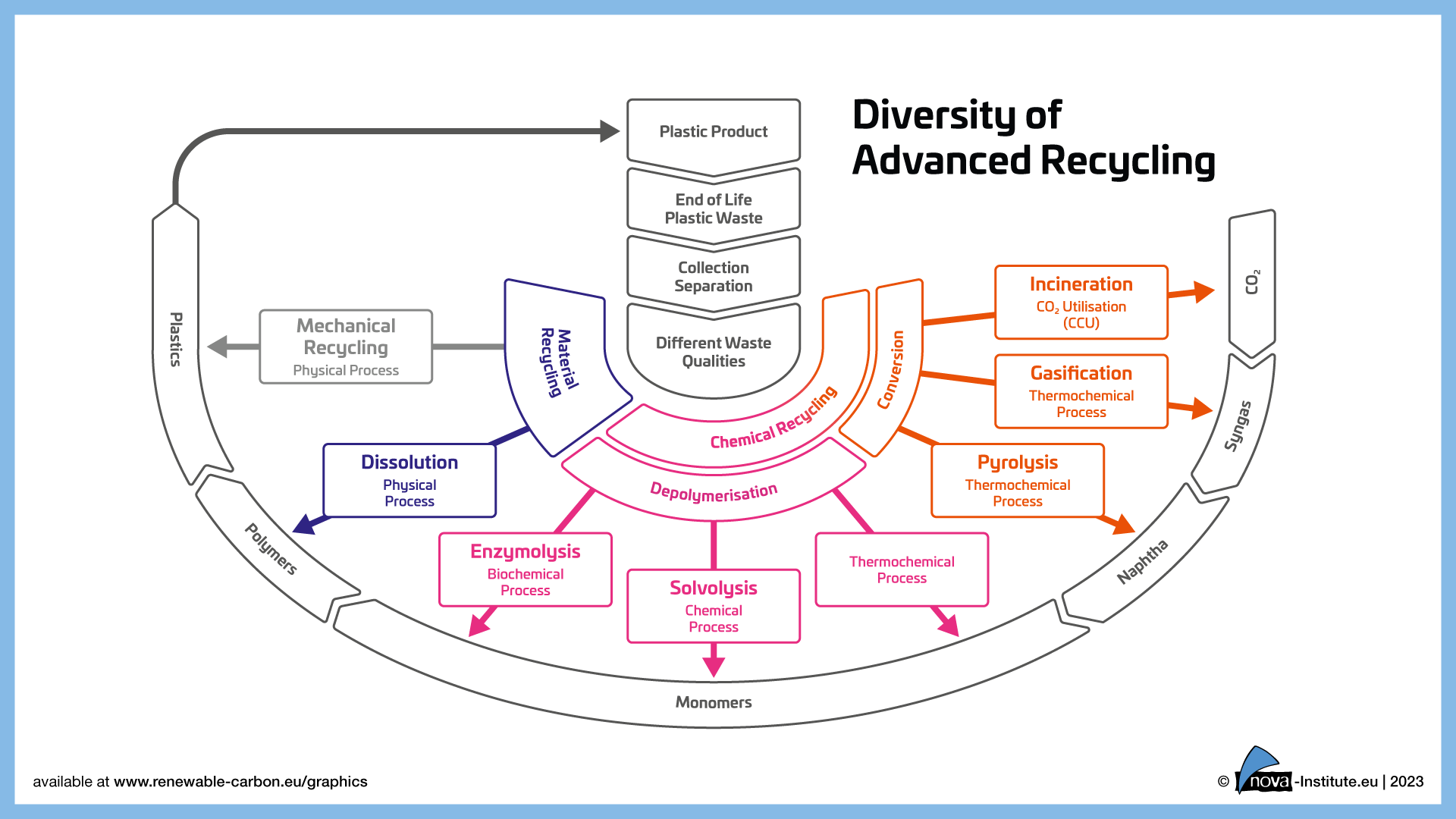

Gasification is a thermo-chemical process of converting carbon-containing waste into synthesis gas and further into electricity or other valuable products
Carbon-containing waste
Valuable products

Our gasification reactor is energy-efficient, compact, and affordable; it is designed for on-site deployment, allowing decentralized waste processing
- No external source of energy is needed
- Utilization of internal energy of waste is high
- ~10% of internal energy to destroy the waste
- Blast air flow is moderate
- Oxidation zone is small and very hot (1200C)
- Hazardous substances are destroyed inside
- Filtration system of outgoing syngas is lean
- Equipment is affordable: $150K+ for a unit
- Unit fits in a 20-foot container
- Waste is utilized locally, no transportation
- Electricity is consumed locally, off-grid
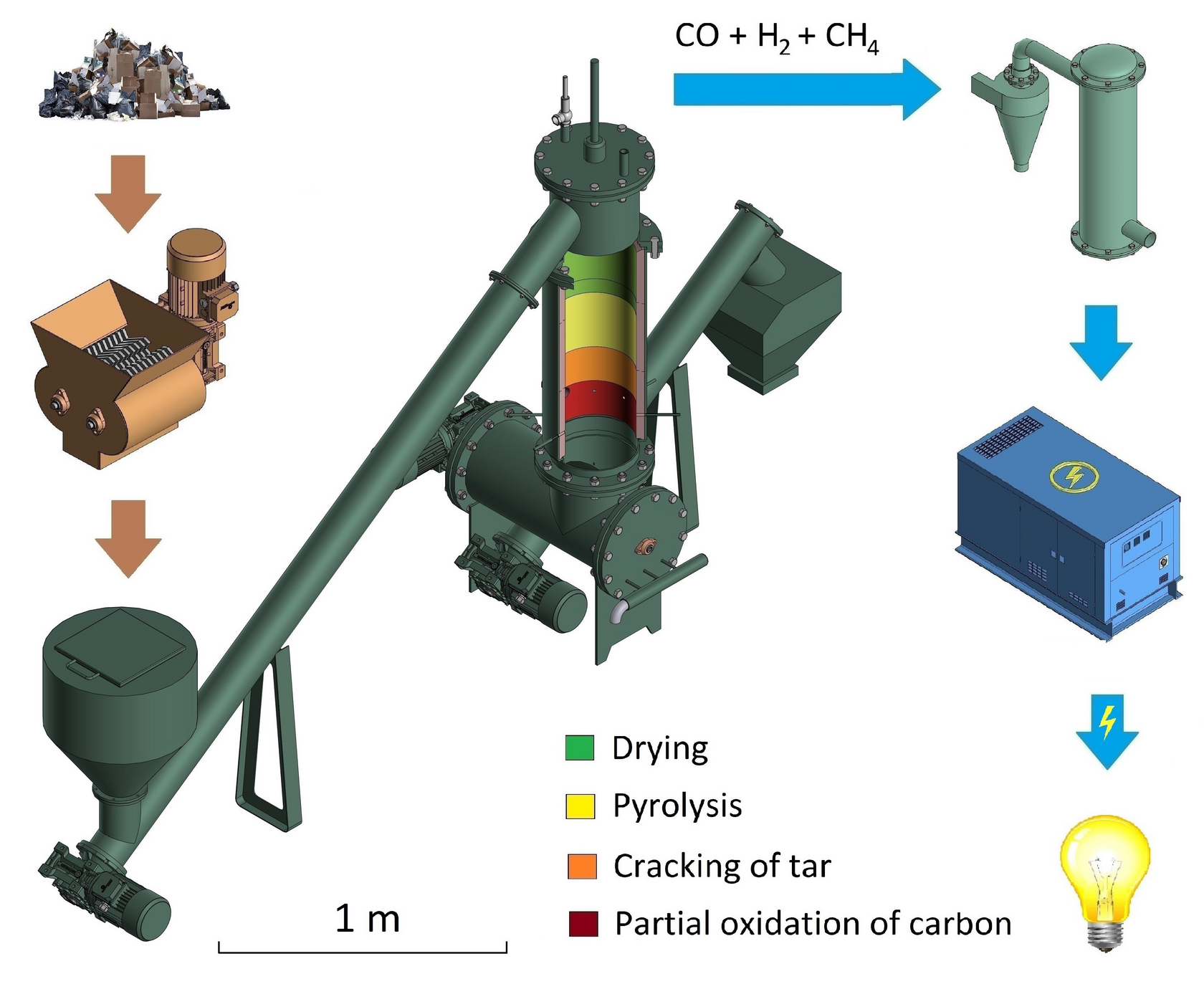
Our prototype can process up to 30 kg of waste per hour, generating up to 20 kilowatts of electric energy, allowing on-site waste processing
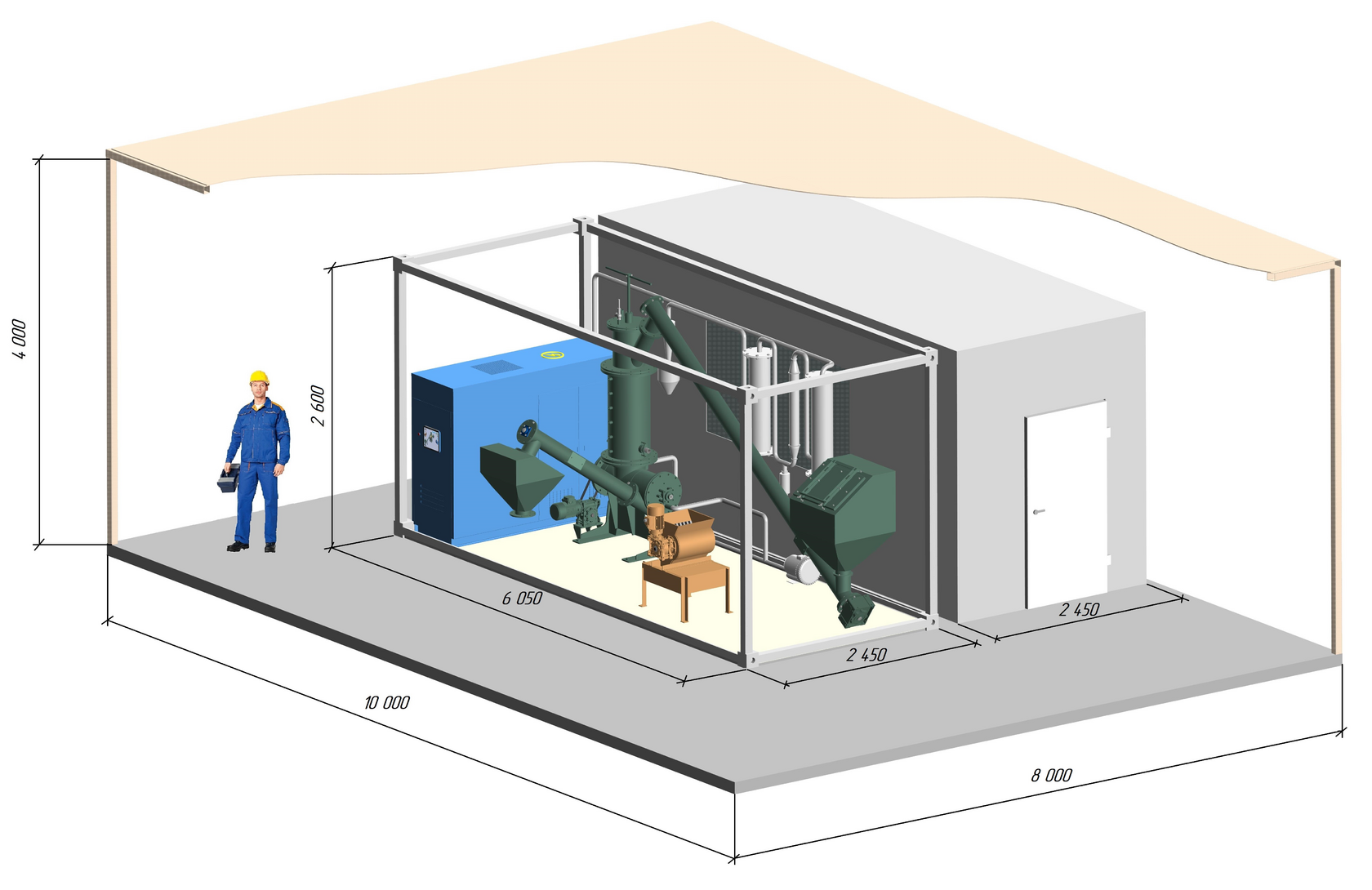
Our commercial unit will process up to 60 kg of waste per hour, generating up to 40 kilowatts of electricity, and will fit into a size of a standard 20-foot container
- Covered outdoor or indoor space: 8*10 = 80 m2
- Shielded space: 3.5*6 = 21 m2
- Air-conditioned space: 2*6 = 12 m2
- Load lifting equipment: up to 2 tons
- Process water, laboratory sink, sewerage
- Fire safety equipment
- Electricity: 15 kW, 220V, and 380V (for the initial R&D phase only)
CleanTainer equipment composition
Required on-site premises
Our target customers are the companies that produce from 100 kilograms to 10 tons of carbon-containing waste per day
- Wood and textile processing companies
- Agriculture farms
- HoReCa in remote locations
- Distribution centers
- Supermarkets in remote locations
- Suburban residences
- Government bodies: army, police, correction facilities
- Auto transportation companies and operators of EOL tires dumps
- Waste processing companies (in the form of partnership)
Without gasification (ton CO2 per ton of waste)
Clients’ waste carbon footprint could be reduced by a factor of five by avoiding methane emissions from dumped waste
With gasification (ton CO2 per ton of waste)


e
Clients’ waste removal and electricity consumption costs could be reduced by 20-30% by decentralized waste utilization
Without gasification
With gasification
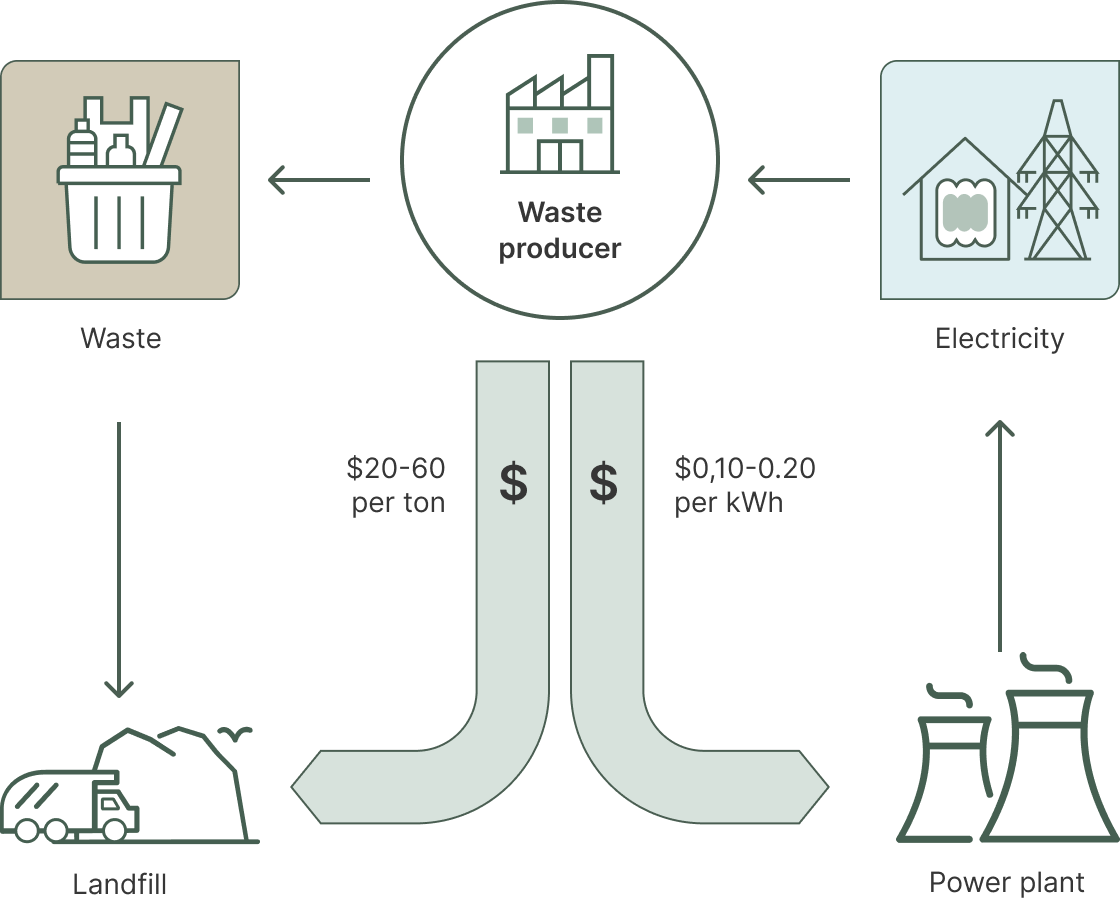
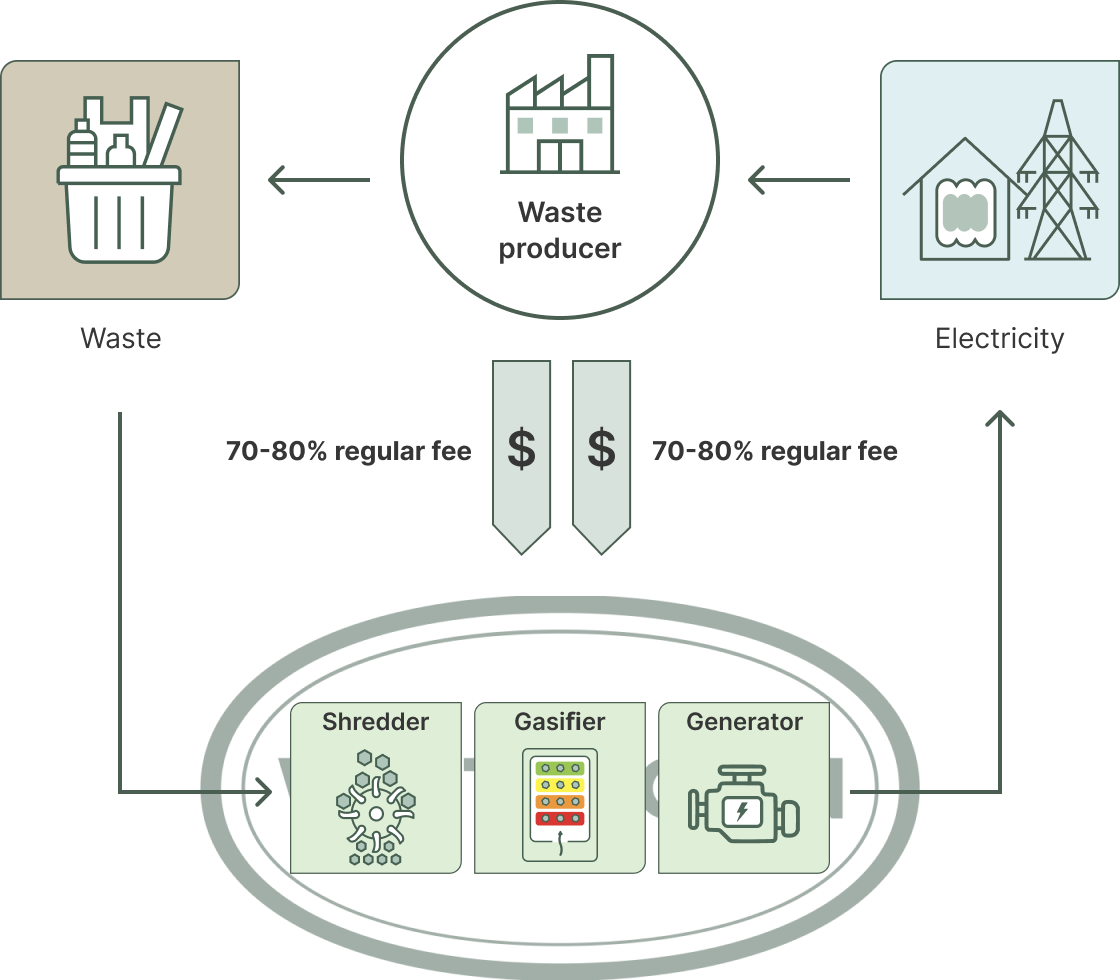
Let’s dump landfills together!
Sergey Likharev, founder and CEO
© 2025 All Rights Reserved. Waste to En
Privacy policy
Privacy policy
Leave a request
We will contact you and answer all your questions
I agree with the privacy policy





